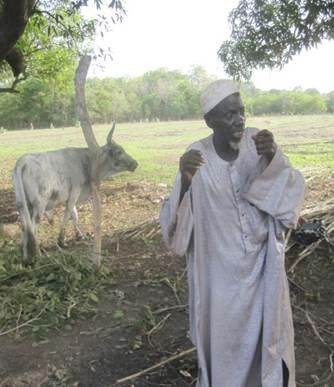
April 2015—The remote rural location of Senegal’s Coumbacara area and its border with neighboring Guinea-Bissau have had a significant impact on community relations and on the free movement of people and goods. Recurring conflicts have taken place between cattle herders and farmers over land and cattle paths, and between villages over cattle theft.
Communities have refused to recognize amicable solutions, even from the most respected traditional or religious authorities, and abandoned local conflict resolution mechanisms long ago.
In light of these issues, USAID began to promote dialogue and community mediation, especially regarding livestock, to increase social stability in Coumbacara starting in June 2012.
Building on past experiences in this area, USAID took a participatory approach to mitigate the internal conflicts that have plagued Coumbacara. Local community-based organizations in the 58 villages worked together to form a monitoring committee to develop solutions to recurring problems. The proposed solutions were implemented by local populace, including traditional leaders, religious leaders, elected officials, youth organizations and women’s organizations.
“Conflict mapping” identified and analyzed common issues and problem areas in the region to prevent and resolve conflicts and diffuse tensions in each village.
One key result was a significant decrease, a few months before the end of the one-year program, in livestock theft due to the monitoring committee’s extensive information-sharing throughout the villages. The process even extended to exchanging information with Guinea-Bissau regarding the cross-border passage of livestock thieves.
Community ownership exceeded initial expectations: People quickly and actively supported the work of the monitoring committee as a means to promote peace.
The results have been durable. Land disputes continue to drop significantly thanks to the delimitation of grazing and farming areas. In addition, the monitoring committee’s awareness sessions and advocacy at rural council meetings helped herders and farmers to accept dialogue and a consultative approach to dispute resolution.
The project’s positive effects on the community extended to classrooms as teachers became involved in the project and shared their knowledge with their students.
“All types of conflicts, tensions and misunderstandings that affect the stability of the area, particularly the cases of livestock theft, are no longer decided in the courts, but are settled by the monitoring committee, which works directly with the relevant local bodies,” said Sidy Baldé, a leader in the community of Saré Niyel.
Baldé explained that the court system was not adapted to socio-cultural elements of the area, and created more problems than it solved. The legal settlement of disputes sometimes fractured the social fabric in the villages, leading to the cancellation of engagements or marriages, or to families not attending relatives' funerals.
The revived conflict resolution mechanism, modeled on prior local practices, has benefited hundreds of people.
The project was part of USAID's Peace and Governance Program, which ran from 2010 to 2014 to support democracy, good governance and national reconciliation in Senegal. Under the program, USAID mapped local conflicts that fueled the bigger conflict in the Casamance region, and funded six projects to work on conflict resolution, prevention and peaceful management beginning in June 2012. Civil society organizations achieved tangible results in five to eight months by setting up local conflict prevention and management mechanisms.
LINKS
Follow @usaidafrica, on Facebook, on Flickr, on YouTube







Comment
Make a general inquiry or suggest an improvement.